
-
Find the right food for your pet
Take this quiz to see which food may be the best for your furry friend.
Find the right food for your pet
Take this quiz to see which food may be the best for your furry friend.
Featured products
 Small & Mini Savory Stew with Chicken & Vegetables Dog Food
Small & Mini Savory Stew with Chicken & Vegetables Dog FoodA delicious complement to the nutrition of Science Diet Small & Mini 7+ dog food
Shop Now Adult 7+ Perfect Digestion Chicken, Whole Oats & Brown Rice Recipe Dog Food
Adult 7+ Perfect Digestion Chicken, Whole Oats & Brown Rice Recipe Dog FoodScience Diet's breakthrough nutrition supports ultimate digestive well-being & healthy microbiome for dogs age 7+
Shop Now Adult Healthy Cuisine Roasted Chicken, Carrots & Spinach Stew Dog Food
Adult Healthy Cuisine Roasted Chicken, Carrots & Spinach Stew Dog FoodDelicious roasted chicken paired with tender vegetables in a succulent stew
Shop NowFeatured products
 Adult Savory Entrée Can Variety Pack Cat Food
Adult Savory Entrée Can Variety Pack Cat FoodPrecisely balanced nutrition with the delicious taste of savory minced chicken to help fuel the energy needs of cats during the prime of their life
Shop Now Adult 7+ Senior Vitality Chicken & Vegetable Stew Cat Food
Adult 7+ Senior Vitality Chicken & Vegetable Stew Cat FoodImproves Everyday Ability to Get Up & Go
Shop Now Adult 7+ Tender Tuna Dinner Cat Food
Adult 7+ Tender Tuna Dinner Cat FoodWith delicious chunks in a decadent gravy
Shop Now -
Dog
- Dog Tips & Articles
-
Health Category
- Weight
- Food & Environmental Sensitivities
- Urinary
- Digestive
- Joint
- Kidney
-
Life Stage
- Puppy Nutrition
- Adult Nutrition
- Senior Nutrition
Cat
- Cat Tips & Articles
-
Health Category
- Weight
- Skin & Food Sensitivities
- Urinary
- Digestive
- Kidney
-
Life Stage
- Kitten Nutrition
- Adult Nutrition
Featured articles
 Why Are Dogs and Cats So Cute?
Why Are Dogs and Cats So Cute?If waggy puppy dog tails and furry kitten yawns make you swoon, you're not alone. Why are cats so cute? And, dogs too! Let's find out!
Read More Does My Pet Hate Me?
Does My Pet Hate Me?Learn tips for bonding with your pet if you've ever thought, 'My dog doesn't like me, or 'Why do I have a standoffish cat?'
Read More Do Dogs and Cats have Belly Buttons?
Do Dogs and Cats have Belly Buttons?Learn whether cats & dogs have belly buttons like humans, what the function is, and if there are any health concerns associated with it.
Read More -


Cats are very adept at contorting their bodies, whether leaping from high surfaces or curling up into tiny spaces. One unusual move you may have noticed is the cat bunny kick, when they kick their hind legs at you, a toy or another cat. Why do cats bunny kick? For more reasons than showing off their martial arts skills, that's for sure.
What Is a Cat Bunny Kick?
You'll know a bunny kick when you see it, usually during playtime. Your furry friend will wrap their front two legs around the intended target (say, for instance, your arm) and, like a little thumper, will kick at the target with their hind legs. Cats typically perform this bunny-kick move when engaging in aggressive play or when they're attacking their prey (i.e., your arm).
Why Do Cats Bunny Kick?
Although a bunny kick sounds cute, it's a stealthy and potentially dangerous behavior.
Whether performed by a domestic cat roaming the rooms of a house or a big cat prowling the jungle, the cat bunny kick is both a tactical self-defense move and a hunting maneuver. When a cat is lying on their back with all four paws and claws on display — either in play or real-life battle — their opponent doesn't stand a chance.
In the wild, cats use the bunny kick to capture their prey just before killing it. If you've ever seen a house cat catch a mouse or bird, you may notice this same behavior, but the cat doesn't always kill the creature, particularly if they're not hungry. In addition to bunny-kicking, cats may just toss the prey around in their paws for a bit.
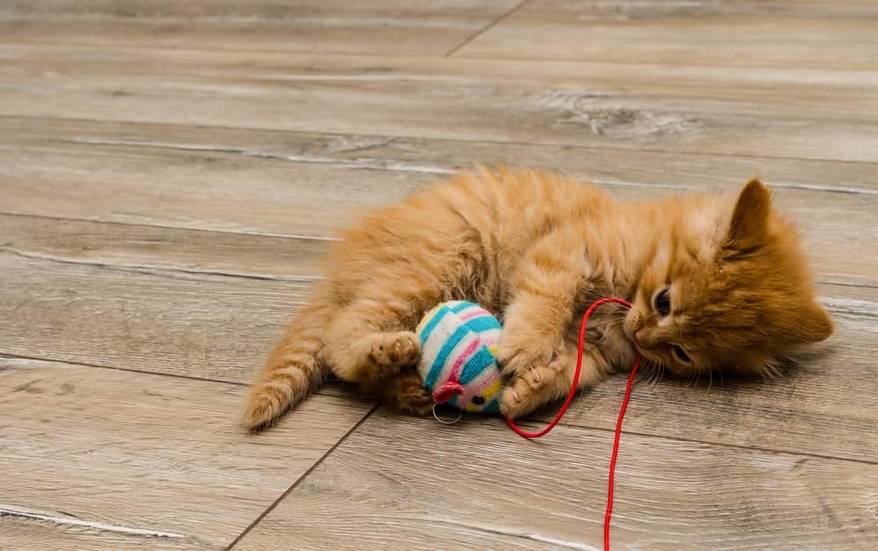
Even if you and your feline friend are goofing off, the use of the bunny kick is an aggressive move. And cats are good at tricking their opponents into thinking they're docile, particularly when exposing their belly. Your kitty may look at you as if to say, "Don't you want to rub my soft belly?" and many times, they really do want a belly rub. But if they're feeling feisty, they'll clutch your hand the second you touch their fluffy fur.


Tasty Tips
Can I Anticipate a Cat's Bunny Kick?
As a pet parent, understanding cat behavior is one way to tell the difference between relaxing or attacking. If their ears are flattened against their head or their pupils are dilated, your cat is ready to rumble.
The more time you spend with your kitty, the sooner you'll discover their likes and dislikes. "Some cats don't like their abdomens touched at all," advises Cat Health, "and they will quickly become angry if you attempt to stroke them there." Suddenly, a belly rub turns into an ambush. Your cat won't hesitate to let you know when they're unhappy.
Can I Reduce the Use of the Bunny Kick?
First, keep in mind that when your cat uses the bunny kick during playtime, they don't intend to harm you, but even in times of peace, you can be scratched and/or bitten.
Second, the use of a bunny kick is instinctual for your cat. International Cat Care points out that up to this point in time, "only the best hunters were able to survive and reproduce, meaning that our pet cats today are descended from the most adept hunters." A cat's hunting instinct runs deep, and because the bunny kick is part of that ingrained behavior, you cannot stop it. But the good news is that you can redirect it.
One way to keep bunny kicks to a minimum is to refrain from participating in aggressive play with your cat. Roughhousing, such as using your hand and/or arm as a chew toy, is not a good idea because it encourages hostile behavior. Another way to discourage cat aggression is to provide your kitty with a stuffed animal (with or without catnip) that they can stalk and attack. (Your arm will thank you.)
When hanging out with your feline friend, cat bunny kicks can be all fun and games until you get scratched. Engage in positive playtime, such as with food puzzles or cardboard boxes, to keep the cat shenanigans to a minimum.


Christine O'Brien is a writer, mom, and long-time cat parent whose two Russian Blues rule the house. Her work also appears in Care.com, What to Expect, and Fit Pregnancy, where she writes about pets, pregnancy, and family life. Find and follow her on Instagram and Twitter @brovelliobrien.
Related products
Related articles
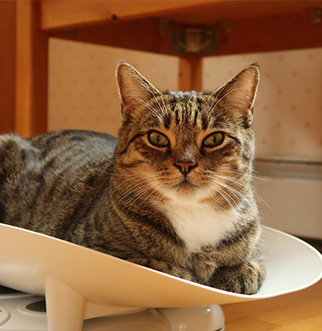
How do you get a cat to lose weight? Learn all about cat foods for weight loss, including how to choose weight control cat food and exercise tips.
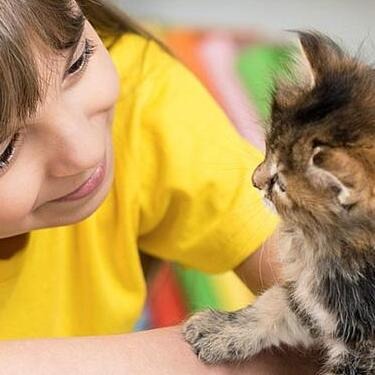
Discover how to train your cat, starting with very basic first steps that both reward good behavior and discourage the bad.
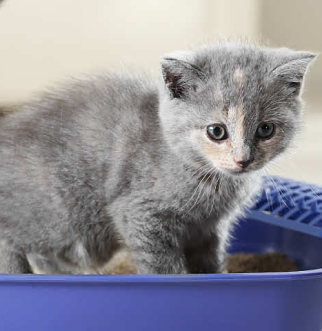
Cats are naturally very clean and chances are your kitten will already have learned how to use the litter box from her mother before she comes to live with you.
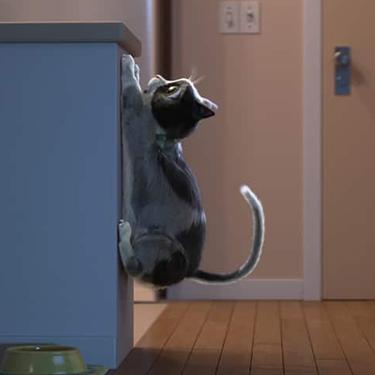
What is the best food for an overweight cat? Learn all about weight control food for cats, including what's in it and how it works.

Put your cat on a diet without them knowing
Our low calorie formula helps you control your cat's weight. It's packed with high-quality protein for building lean muscles, and made with purposeful ingredients for a flavorful, nutritious meal. Clinically proven antioxidants, Vitamin C+E, help promote a healthy immune system.
Put your cat on a diet without them knowing
Our low calorie formula helps you control your cat's weight. It's packed with high-quality protein for building lean muscles, and made with purposeful ingredients for a flavorful, nutritious meal. Clinically proven antioxidants, Vitamin C+E, help promote a healthy immune system.

